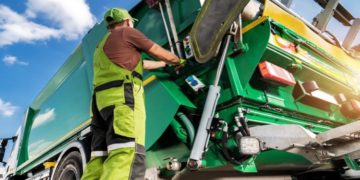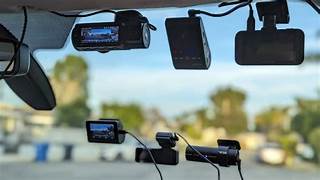Battery-powered dash cams have brought a major shift in how fleets track and manage their vehicles in 2025.
These cameras keep recording even when the engine is off. This makes them more reliable and flexible than older hardwired systems that stop when the ignition is turned off.
Fleet managers now rely on them for better visibility, more protection, and fewer blind spots.
The Shift in GPS Fleet Tracking Technology
GPS fleet tracking technology has changed a lot over time. It started with simple GPS devices that could only show a vehicle’s location. These tools helped with route planning, but they couldn’t show what was happening on the road.
Later, fleets added hardwired dash cams. These offered visual proof during incidents but had one major weakness. They only worked when the engine was on.
That’s where battery-powered dash cams come in. These cameras solve that problem by using built-in batteries. They can keep recording while a vehicle is parked, idling, or completely turned off.
This means fleets no longer miss important moments that happen when the vehicle is not running.
What Are Battery-Powered Dash Cams?
Battery-powered dash cams are recording systems that don’t need to be wired into a vehicle’s electrical system. Instead, they run on rechargeable batteries or supercapacitors. This gives them the ability to operate even when the engine is shut down.
Most of these dash cams come with extra features that help with safety and efficiency. They include built-in GPS to track movement, cloud connectivity to store footage remotely, and sensors that trigger recordings during events like sudden stops or bumps.
Common Features You’ll See:
- A rechargeable internal battery or high-efficiency supercapacitor
- Two or more cameras to capture different angles around and inside the vehicle
- Automatic cloud uploads for secure and remote storage
- Event detection tools powered by motion sensors and impact alerts
Benefits of Using Battery-Powered Dash Cams in Fleets
They Record When the Engine Is Off
One of the biggest advantages is constant recording. These dash cams don’t rely on the ignition, so they keep working in parking lots, rest areas, or at loading docks. If there’s an incident like theft, vandalism, or a hit-and-run, the camera will have recorded it.
Setup Is Simple and Clean
Battery-powered dash cams are easy to install. There’s no need to open panels or connect to the fuse box. You just mount the camera and it starts working. This makes it easier to move the camera from one vehicle to another whenever needed.
They Work During Power Failures
These dash cams keep operating even if the vehicle’s battery fails or someone tries to disable the system. That’s important during crashes or tampering. The footage continues recording in real time, without any gaps.
They Help Track Driver Behavior
Most modern dash cams come with AI tools that can spot unsafe driving. This includes speeding, tailgating, phone use, and drowsy driving. When the camera detects these actions, it alerts the fleet manager. Having video proof makes it easier to talk to drivers and fix bad habits.
Important Footage Is Stored in the Cloud
Many battery-powered dash cams automatically upload videos when something unusual happens. If a crash or sudden stop triggers the camera, the footage is saved to a cloud account. This protects the recording from being lost or damaged and makes it easy to review anytime.
They Speed Up Insurance Claims
Video recordings are often the best proof in case of a dispute. Battery-powered dash cams help show what really happened in an accident.
This helps fleets respond faster, avoid false claims, and even lower insurance costs. Some insurance companies now offer premium discounts of up to 15 percent for fleets that use these cameras.
They Provide Insights Into Fleet Operations
The cameras don’t just record accidents. They also collect data on routes, idle times, fuel use, and more. This information helps fleet managers make better decisions, plan smarter routes, and reduce unnecessary expenses.
Where Battery-Powered Dash Cams Make the Most Difference
Delivery Vehicles in Cities
Urban fleets often park in crowded or risky areas. These cameras keep recording during drop-offs and stops, giving a clear view if anything happens around the vehicle.
Construction Equipment
Machines like bulldozers and dump trucks may sit unused for long periods or run without regular patterns. Battery dash cams make sure nothing is missed even when the engine isn’t running.
School Transport
For vehicles that carry children, these cameras provide safety footage before, during, and after school runs. This creates more accountability for drivers and ensures a record is always available if needed.
Emergency Response Fleets
Police cars, fire trucks, and ambulances often deal with high-pressure situations. These dash cams capture events that happen while parked at scenes or waiting for dispatch. This can be useful for reports and investigations.
Helping Fleets Stay Compliant and Safer
Battery-powered dash cams play an important role in helping fleets meet safety regulations. Agencies like the DOT and FMCSA expect consistent safety tracking. These cameras record what’s happening in the cabin and on the road at all times. That makes it easier to prove compliance and fix violations.
They also reduce the risk of fraud. Clear video footage has helped fleets resolve more than 85 percent of accident disputes in 2025. This saves time and protects drivers from false blame.
Fleets using battery-powered dash cams often score higher in safety evaluations. Insurance companies and regulators notice the added accountability. In many cases, safety scores improve by over 20 percent, which helps reduce legal risks and insurance costs.
What to Look for When Choosing a Battery-Powered Dash Cam
Long Battery Life
Look for a model that runs for at least 24 hours after a full charge. Some premium models offer extended life to cover multiple shifts without recharging.
Cloud Features
Choose cameras that upload footage automatically. LTE or 5G support means videos get sent to the cloud in real time, even during an incident.
Event Detection Tools
Pick a camera that reacts to motion, sudden turns, fatigue signs, and impact. This helps save only the clips that matter and avoids recording hours of still footage.
Durable Build Quality
Vehicles go through rough conditions. Cameras need to handle vibration, dust, heat, and water. Look for models with strong protection ratings like IP65.
Easy-to-Use Dashboard
Good fleet systems let you manage all your dash cams from one place. You should be able to view footage, track drivers, and see alerts on a single dashboard.
What’s Ahead for Fleet Dash Cams
Battery-powered dash cams will continue to improve. In late 2025, we’re seeing new features like solar charging panels, advanced AI for behavior analysis, voice commands for hands-free control, and better integration with electric vehicles.
Fleets will use this data to prevent accidents before they happen. Risk prediction will become more common, thanks to smarter video tools.
Final Thoughts
Battery-powered dash cams are more than just a safety tool. In 2025, they have become a core part of fleet operations.
They offer round-the-clock visibility, improve safety, protect against fraud, and help managers make better decisions. With constant recording and easy access to footage, these cameras solve the biggest gaps that older systems left open.
Fleets that adopt battery-powered dash cams gain a real advantage. They reduce risk, improve driver performance, and handle incidents more effectively. For any fleet aiming to improve performance and security, these dash cams are no longer optional. They are essential.











































































